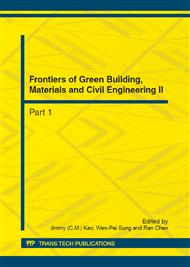[1]
D.Rowland – T.N. Howe: Vitruvius, Ten Books on Architecture, Cambridge University Press, Cambridge, 1999.
Google Scholar
[2]
Yi-Kai Juan, Peng Gao, Jie Wang, A hybrid decision support system for sustainable office building renovation and energy performance improvement, Energy and Buildings . 42(2010) 290-297.
DOI: 10.1016/j.enbuild.2009.09.006
Google Scholar
[3]
Giuseppe Pellegrini-Masini, Chris Leishman, The role of corporate reputation and employees' values in the uptake of energy efficiency in office buildings, Energy Policy. 39(2011)5409– 5419.
DOI: 10.1016/j.enpol.2011.05.023
Google Scholar
[4]
Information on http://www.nyc.gov/html/ddc/downloads/pdf/guidelines.pdf
Google Scholar
[5]
Information on http://www.nibs.org/client/assets/files/hpbc/NIBS_HighPerformanceBuildings_Report.pdf
Google Scholar
[6]
Information on http://www.nrel.gov/docs/fy01osti/30171.pdfLiknande
Google Scholar
[7]
James Steele, Sustainable Architecture: Principles, Paradigms, and Case Studies, 8th ed., Mcgraw-Hill, New York, 1997.
Google Scholar
[8]
Allen J. Zerkin, Mainstreaming high performance building in New York City: A comprehensive roadmap for removing the barriers, Technology in Society.28 (2006) 137-155.
DOI: 10.1016/j.techsoc.2005.10.017
Google Scholar
[9]
Griffiths, T.L., Steyvers, M., & Tenenbaum, Topics in semantic representation, Psychological Review.114 (2007)211–244.
DOI: 10.1037/0033-295x.114.2.211
Google Scholar
[10]
Yu Liu, A Holistic Approach to Developing Generic vs. Regionally Specific Frameworks for Sustainable Building Tools, Doctoral Dissertation, NSW, Australia, 2005.
Google Scholar
[11]
Joseph J. Romm, William D. Browning, Greening the building and the bottom line: increasing productivity through energy-efficient design, Rocky Mountain Institute, Snowmass, 1994.
Google Scholar
[12]
Information on http://www.usgbc.org/Docs/News/News477.pdf
Google Scholar
[13]
Information on http://www.wbdg.org/design/office.php
Google Scholar


